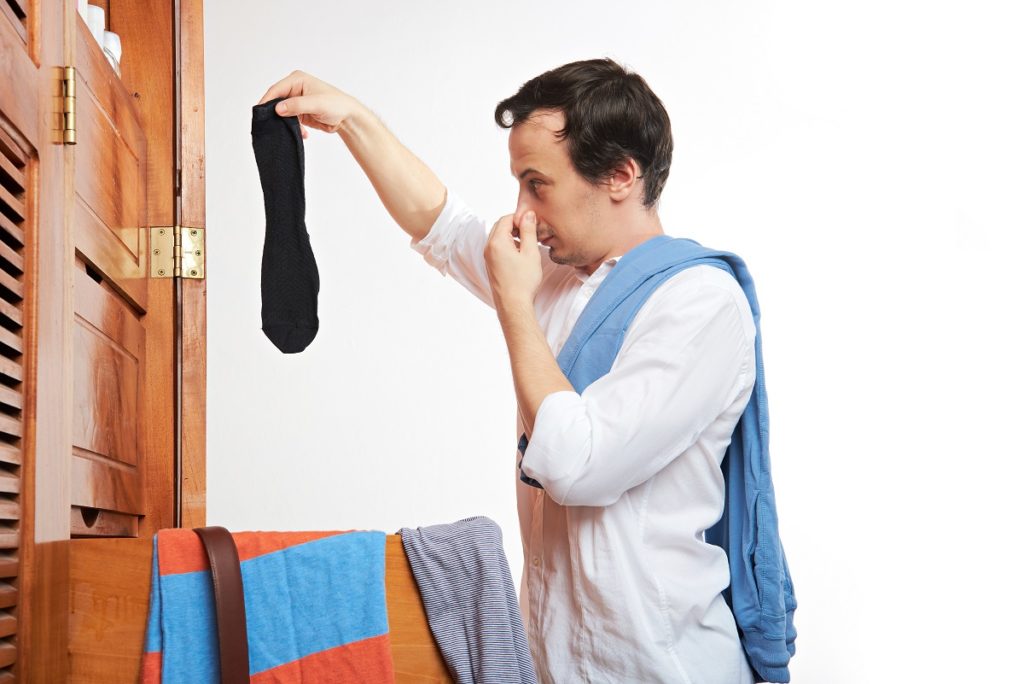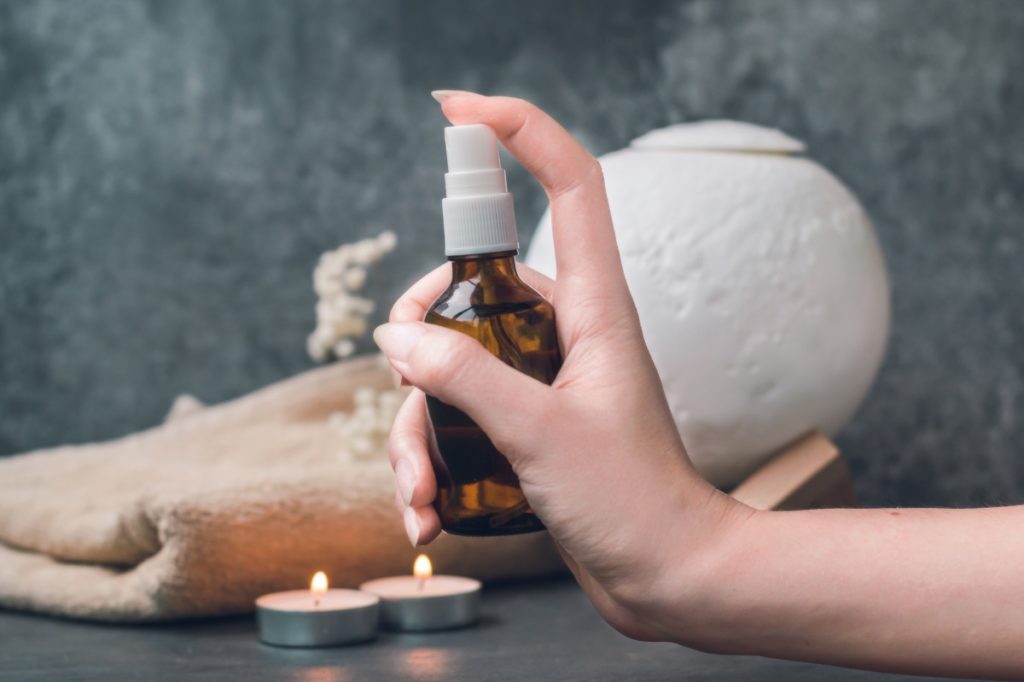For the most part, by this time of year most of us are tired of our stuffy winter clothes. Maybe this is why Adam and Eve were naked in paradise (smile). Yes, that might be going a little too far, but I for one am ready to switch into my lighter, more colorful jackets and slacks. Now that the days are getting a little sunnier and longer, I thought this might be a good time to empty our closets and give everything a nice, fresh smell. And let’s put away our winter clothes while we’re at it. If that sounds like a great idea, keep reading to learn how you can refresh your smelly wardrobe.
The Dangers of Not Sanitizing Winter Clothes
While we depend on our immune system to protect us from all kinds of bugs and germs, it’s good to relieve it of some of the burdens we impose on it without much thought. Your hat, gloves, scarfs, and coats can all be super carriers of nasty germs, but most of us don’t regularly take the time to sanitize these items by tossing them into the washer at least once a week, putting them into a hot dryer for about 45 minutes, or hanging them out in the sun for a day or two. (The sun is a great sanitizer, and at one time even hospitals relied on it for healing.)
In a great article published in the New York Post, Rebecca Santiago details the different disease-causing germs that accumulate on your coat, hats, gloves, and scarfs. It’s well worth the read. For starters, I suggest that if you haven’t hung your winter clothes out in the fresh air and sunshine—or if they haven’t seen the inside of a drycleaner, washing machine, or hot dryer for more than a month—it’s crucial to give them a good sanitizing, as Santiago explains. After that, consider using the two herbal and essential oil recipes I include below. You can find many others online that will keep your winter wardrobe healthy for your skin, lungs, and overall health.
Are Herbs and Essential Oils Potent Enough to Kill Germs?
There is evidence that herbs and essential oils contain profound healing and cleansing properties. For example, take a quick look at how many professionals use these powerful substances on a daily basis to help people with numerous disorders. And in the case of this blog post, I discuss how to use herbs and essential oils to keep your wardrobe, closets, and drawers sanitary and smelling great.
It only takes a quick online search to find world-renowned herbalists who use herbs and essential oils (a class of concentrated remedies), proving that they really do work and kill germs. By using these substances properly, we can accomplish great results—and avoid toxic chemicals that can poison our system. See below to learn more about these powerful herbs as well as some important spices.
Five Bacteria-Killing Spices and Herbs
I suggest reading this article to understand the full impact of the following five natural bacteria-killing products, but below are few key points about each of them. This should encourage you to start using both herbs and essential oils for many things, not just sanitizing you’re wardrobe.
Cinnamon: According to researchers at Kansas State University, cinnamon turns out to be a powerful spice that can kill Escherichia coli (E. coli).
Raw pumpkin seeds: Raw pumpkin seeds not only contain a natural fat known to be toxic to parasitic eggs, but they also contain cucurbitacin, which paralyzes worms so they cannot hold onto the intestinal walls.
Oregano: Studies suggest that oregano contains important antifungal properties that offer a strong defense against Candida albicans.
Thyme: An active ingredient in many “green” household cleaners is thyme oil, which makes sense as thyme is known for its antibacterial and antimicrobial properties.
Basil: Another impressive antimicrobial herb is basil, which protects us against a range of foodborne pathogens, including bacteria, yeasts, and mold. To cite just one example, basil oil offers protection against E. coli, one of the most common foodborne pathogens.
I sure hope this information will convince you that it’s time to thoroughly clean the contents of your closet and relieve your system of the many problems that non-sanitized winter clothing can create in your life.
Two Basic Herbal Recipes
The recipes below are from Calgary-based writer and gardener Sheryl Normandeau, which were published along with her detailed notes in the Spring 2020 issue of Herb Quarterly. There are more recipes in her article, but below are two of my favorites. Also keep in mind that you can find many such recipes online. (Visit Normandeau’s website at Flowery Prose.)
Odor Eater for Shoes
¼ cup dried herbs (Normandeau suggests peppermint and lavender)
½ cup cornstarch
½ cup arrowroot powder
1 tablespoon charcoal powder
Using a mortar and pestle, lightly bruise your mix of herbs and combine with other ingredients. Place all ingredients in sachet bags and tie at the top. Place them in the shoe and allow them to sit for about 24 hours. (Personal comment: You can also use this recipe to make sachets for your drawers. Start with your favorite dried herbs and add two drops of your favorite essential oil.)
Steeped Herbal Water Spray
1 cup boiling water
⅓ cup dried herb of your choice
Pour boiling water over the herbs and allow them to sit until mixture reaches room temperature. Strain using a fine-meshed sieve, and save liquid for use in cleaning. (Personal comment: I would add 2 drops of my favorite essential oil and use this spray lightly on my sanitized winter coat, gloves, hat, and or scarf. It could also be used to freshen up the air.)
[xyz-ihs snippet=”Begin-Authors-Note”]Afterthoughts from the Traditional Cook
My Family
I’ve adopted a big family
They live in Earth you see
They are very giving
And are kind to me.
They are never rude
Or talk about others
They are silent and so sweet
They are my sisters and brothers.
They respond to love
And give it back to me
The more I talk to them
The bigger they get I see.
They reward me every day
With many qualities
Like relaxation, and healing
In their properties.
Are you wondering who they are
I’ll tell you this, right now
They are my twelve Herbs
So little family take a bow.
—Rosie Christa
Disclaimer from Maria Atwood, CNHP: I am a Certified Natural Health Professional, CNHP, not a medical doctor. I do not diagnose, prescribe for, treat, or claim to prevent, mitigate, or cure any human diseases. Please see your medical doctor or health practitioner prior to following any recommendations I make in my blog posts or on my website.
Images from iStock/Favor_of_God (main), dimarik (man smelling the sock), Dina Shigina (spray bottle).



